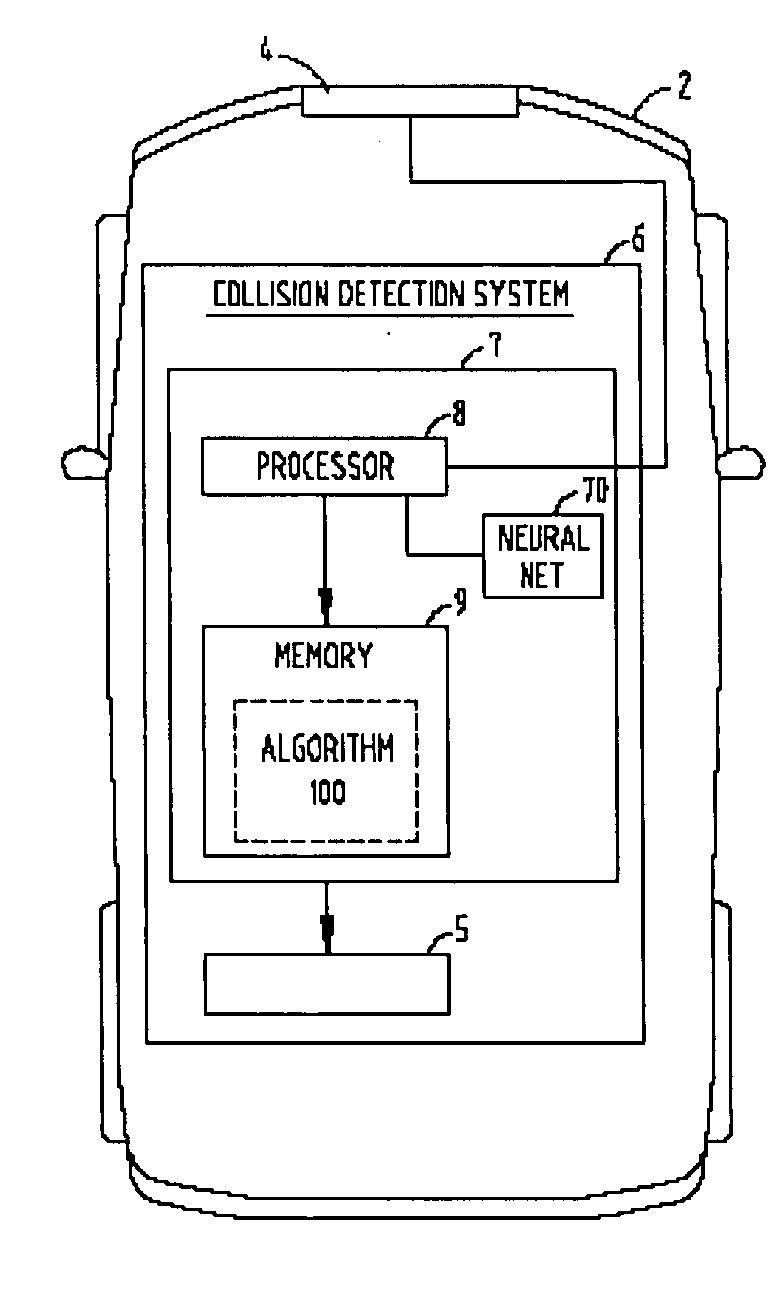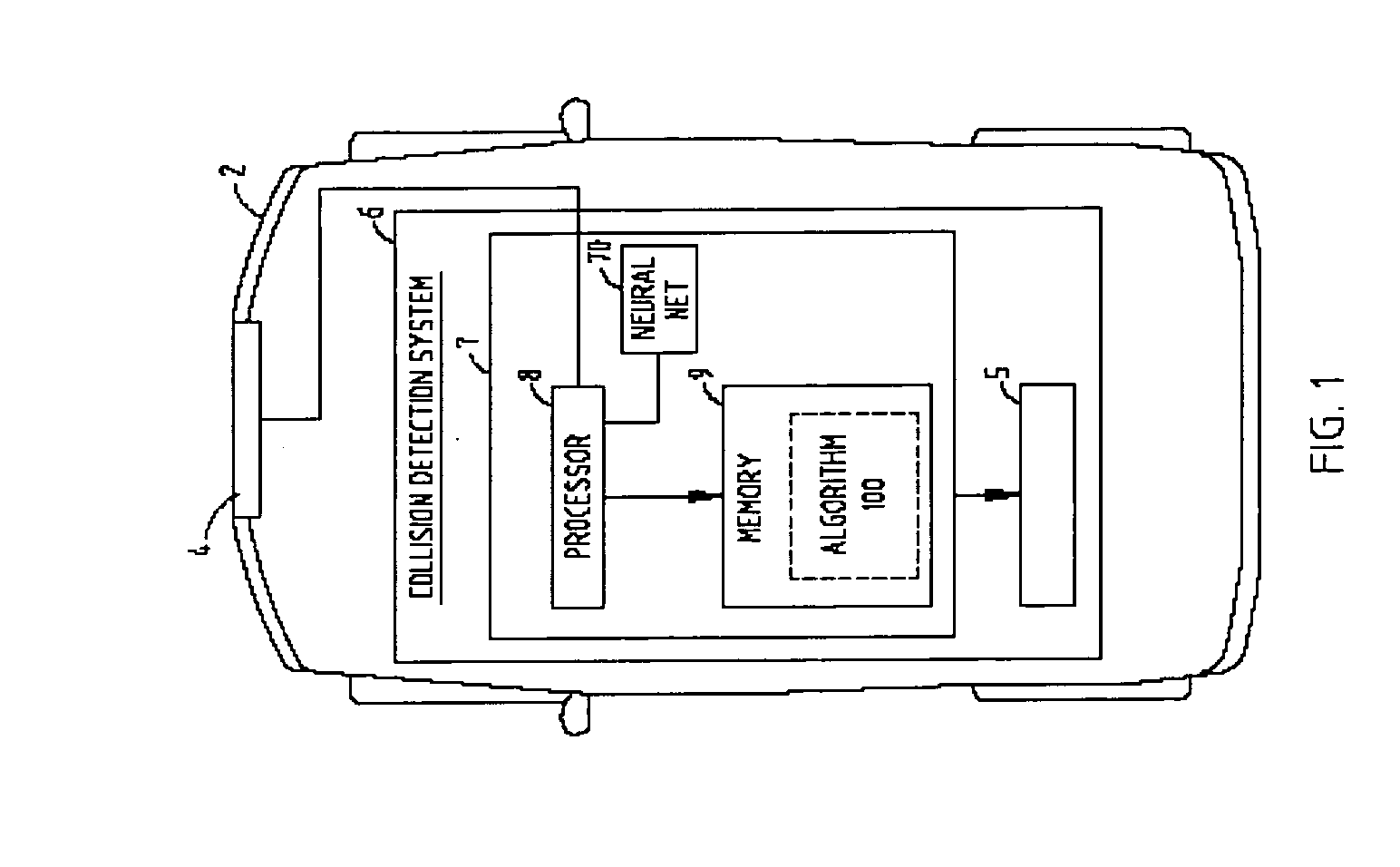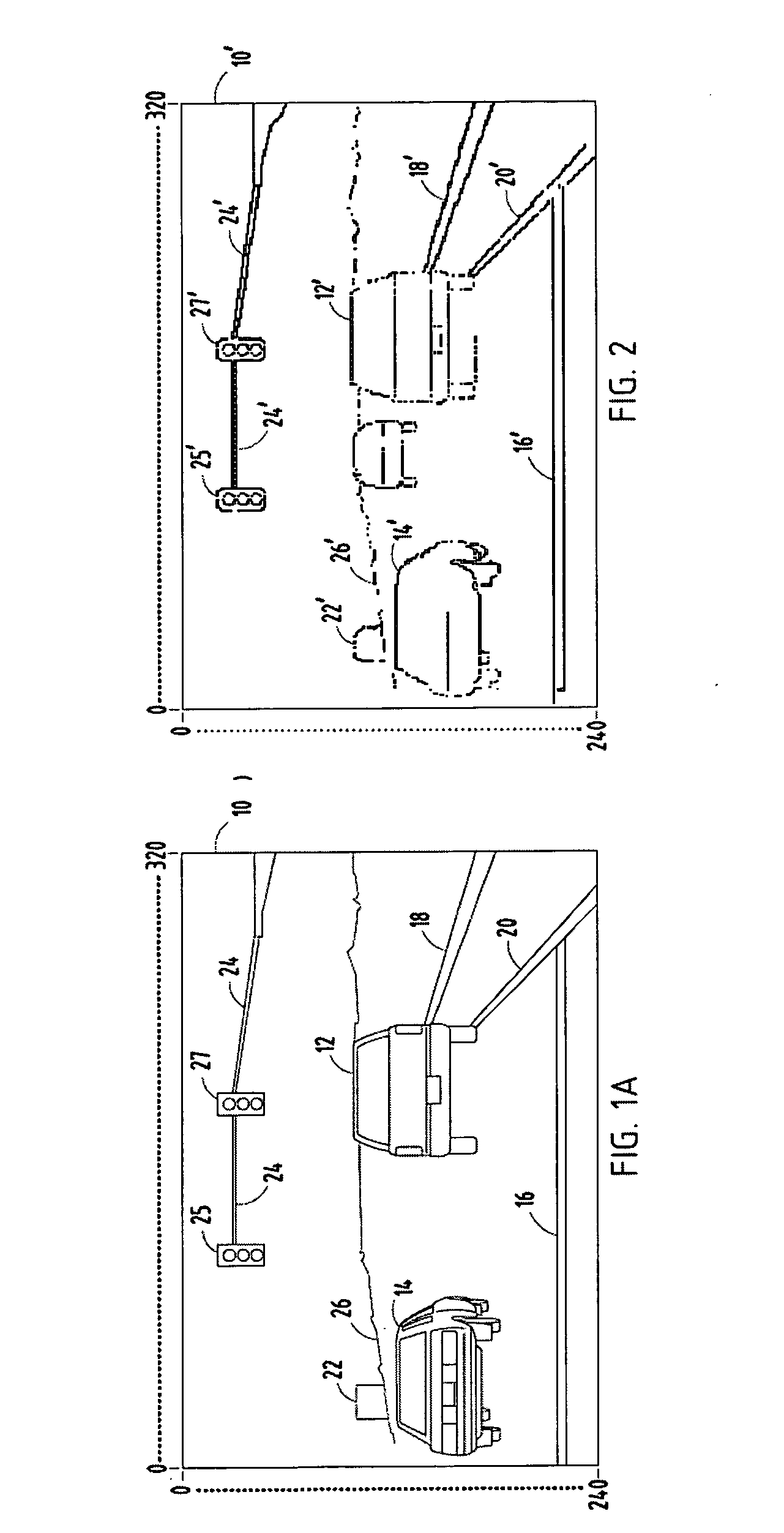Method for identifying vehicles in electronic images
a vehicle identification and electronic image technology, applied in scene recognition, traffic control systems, instruments, etc., can solve problems such as multiple false positives of vehicles, placement of bounding boxes, and inability to accurately identify vehicles
- Summary
- Abstract
- Description
- Claims
- Application Information
AI Technical Summary
Problems solved by technology
Method used
Image
Examples
Embodiment Construction
[0028]FIG. 1 generally illustrates a vehicle 2 having a camera 4 coupled to a collision detection system 6, according to one embodiment of the present invention. The camera 4 is shown located in a forward location of the vehicle 2, and is configured to provide electronic images of a view to the front of the vehicle 2 to the collision detection system 6. Collision detection system 6 is shown including a detection system 7 configured to identify potential vehicle locations in the images provided to collision detection system 6 by camera 4. Detection system 7 includes a processor 8 coupled to memory 9 and a neural network 70. Memory 9 includes an algorithm, such as, for example, the algorithm 100 (discussed below) that is executed by processor 8 to cause detection system 7 to identify potential vehicle locations in the electronic images provided to collision detection system 6 by camera 4. As shown, detection system 7 is coupled to additional processing circuitry 5. Detection system 7 ...
PUM
 Login to View More
Login to View More Abstract
Description
Claims
Application Information
 Login to View More
Login to View More - R&D
- Intellectual Property
- Life Sciences
- Materials
- Tech Scout
- Unparalleled Data Quality
- Higher Quality Content
- 60% Fewer Hallucinations
Browse by: Latest US Patents, China's latest patents, Technical Efficacy Thesaurus, Application Domain, Technology Topic, Popular Technical Reports.
© 2025 PatSnap. All rights reserved.Legal|Privacy policy|Modern Slavery Act Transparency Statement|Sitemap|About US| Contact US: help@patsnap.com



